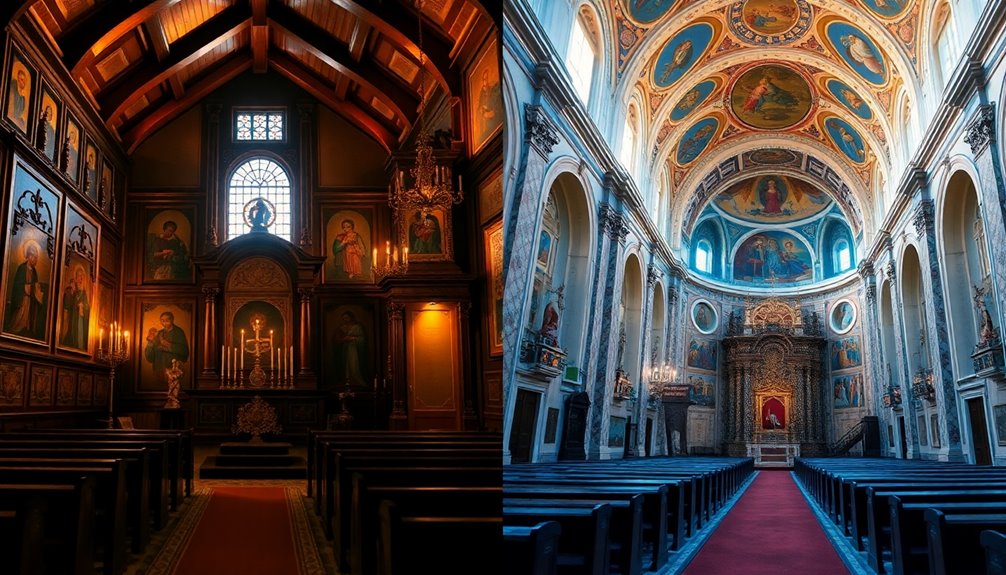Yes, there's a difference between Orthodox and Greek Orthodox. "Orthodox" refers to the broader Eastern Orthodox Church, while "Greek Orthodox" focuses specifically on communities with Greek heritage. The Greek Orthodox Church, part of Eastern Orthodoxy, emphasizes the use of the Greek language in its liturgy and is deeply tied to Greek culture and identity, with 81-90% of Greece's population identifying as Greek Orthodox. Both share core beliefs and sacraments, but unique traditions and practices enrich the Greek Orthodox experience. Curious about how these elements shape their faith and community? There's much more to uncover!
Key Takeaways
- "Orthodox" refers to the broader Eastern Orthodox Church, while "Greek Orthodox" specifically highlights Greek heritage within that tradition.
- The Greek Orthodox Church is a significant branch within Eastern Orthodoxy, governed by the Ecumenical Patriarchate of Constantinople.
- Approximately 81-90% of Greece's population identifies as Greek Orthodox, linking faith closely with national identity and culture.
- Greek Orthodox worship employs the Greek language in its liturgical practices, preserving cultural traditions and heritage.
- While all Orthodox churches share core doctrines, the Greek Orthodox Church has specific theological interpretations and customs unique to its identity.
Etymology and Historical Context
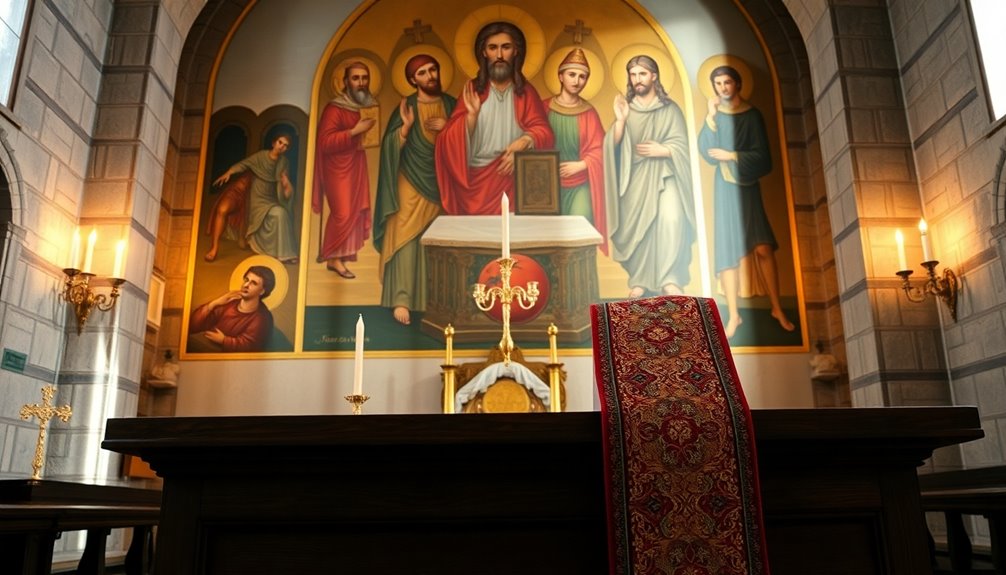
Although the term "Orthodox" signifies correct worship and doctrine, its roots explore deep into the historical context of Christianity. The word comes from the Greek language, combining "orthos" (correct) and "doxa" (glory/worship).
Greek Orthodox churches trace their origins to the Byzantine Empire, which played a vital role in shaping Orthodox Christianity during the first eight centuries. The Ecumenical Patriarchate of Constantinople, along with other patriarchates in Alexandria, Antioch, and Jerusalem, governs various Greek Orthodox jurisdictions.
The Great Schism of 1054 was a significant moment that solidified the division between Eastern Orthodoxy and Western Christianity, allowing Greek Orthodoxy to develop its distinct identity.
Throughout history, Greek Orthodox communities have preserved ancient church traditions, steadfastly maintaining the Orthodox Faith.
Churches and Demographics
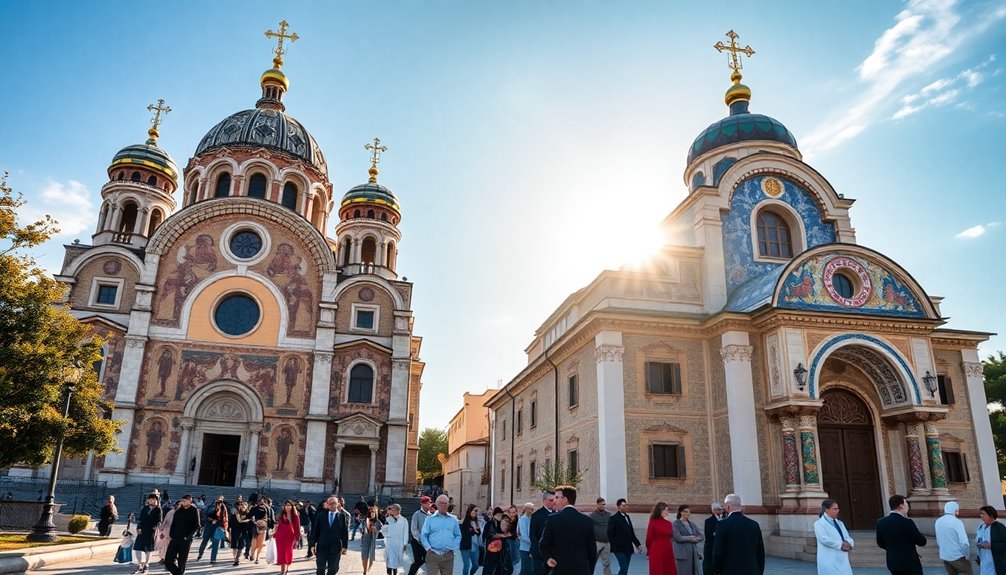
As you explore the landscape of Orthodox Christianity, you'll find that the Greek Orthodox Church plays a pivotal role within the larger Eastern Orthodox community. It comprises key entities like the Ecumenical Patriarchate of Constantinople and the Church of Greece.
In Greece, about 81-90% of the population identifies as Greek Orthodox, making it a cornerstone of national identity and culture. The church retains the Greek language in its liturgical practices, emphasizing its rich cultural heritage.
Globally, Greek Orthodox communities thrive, especially in the United States, where they actively preserve their traditions.
With a hierarchical structure featuring bishops, priests, and deacons, the Greek Orthodox Church maintains continuity with ancient practices, reinforcing its significance among Orthodox Christians worldwide.
Characteristics and Key Figures
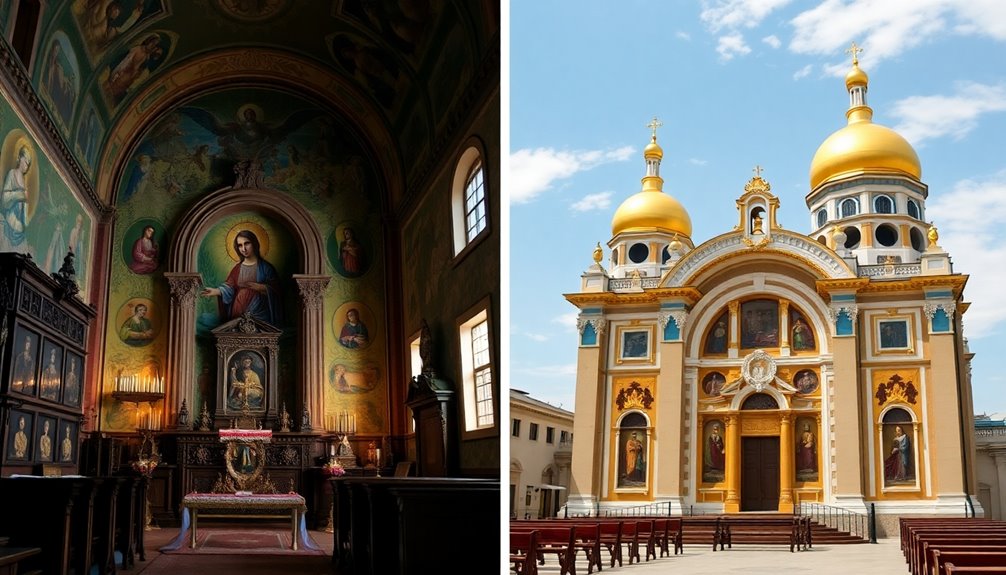
When examining the characteristics and key figures of the Greek Orthodox Church, you'll discover a rich tapestry of traditions and leadership that shapes its identity.
As a branch of Eastern Orthodoxy, it includes the Ecumenical Patriarchate of Constantinople, recognized as the "First Among Equals." This church emphasizes Apostolic succession, ensuring the validity of sacraments traced back to the Apostles.
Its liturgical traditions are vibrant, and the use of the Greek language in worship reflects its cultural heritage. Influential theologians and church leaders have played significant roles in shaping contemporary practices while fostering interfaith dialogue.
Additionally, monastic communities are essential in preserving traditions and enriching the spiritual life of the Greek Orthodox faithful, contributing to a strong sense of continuity and community.
Cultural Significance and Contributions
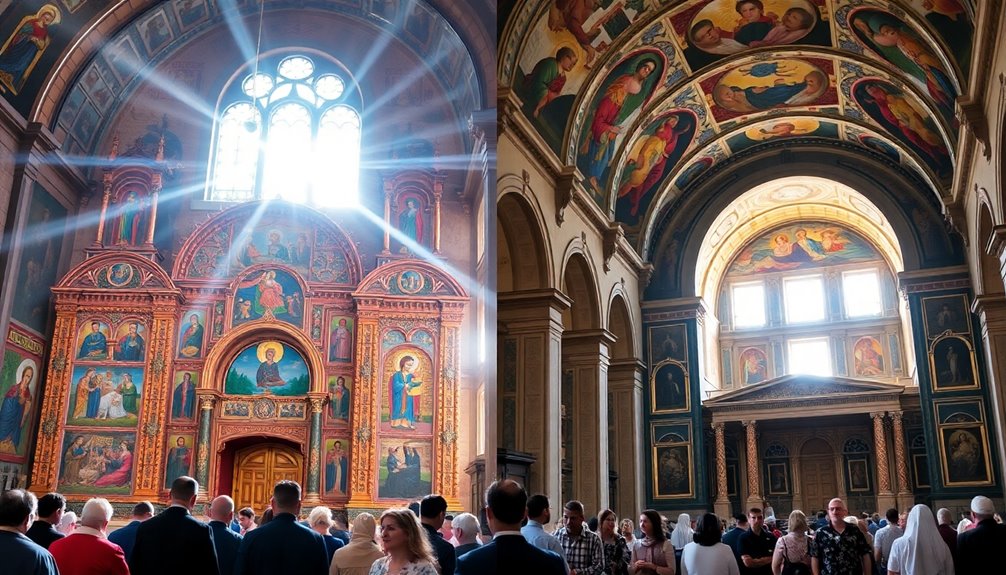
The Greek Orthodox Church deeply influences both Greek culture and national identity. As an Orthodox Christian community, it preserves cultural heritage through art and architecture, featuring stunning Byzantine domes and richly decorated interiors. Liturgical music, with its unique chants, enhances worship and connects individuals during religious observances and festivals.
| Contributions | Description |
|---|---|
| Art and Architecture | Byzantine-style churches and icons |
| Liturgical Music | Unique chants and hymns in worship |
| Religious Observances | Celebrations like the Annunciation |
| National Identity | Intertwining of faith and patriotism |
| Community Engagement | Cultural preservation in the diaspora |
Through these traditions, the Greek Orthodox Church strengthens ties among members and fosters a sense of belonging worldwide.
Theological Distinctions and Communion
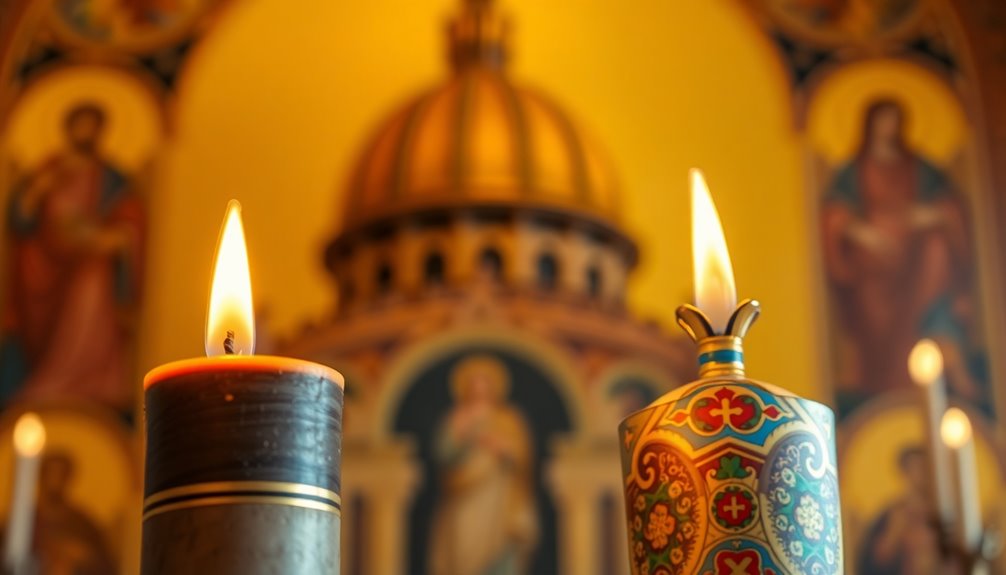
While both the Greek Orthodox Church and other Orthodox jurisdictions share a common foundation in faith, they also exhibit distinct theological nuances that reflect their unique identities.
The term "Orthodox" encompasses the broader Eastern Orthodox Church, while "Greek Orthodox" highlights traditions tied to Greek heritage and the Ecumenical Patriarchate.
Although the Greek Orthodox Church embraces core Christian doctrine and sacraments like other Orthodox communities, it emphasizes specific theological distinctions, such as the interpretation of the Holy Spirit's procession.
The authority of the Ecumenical Patriarch as "Primus Inter Pares" further shapes its identity.
Importantly, all Orthodox churches, including Greek Orthodox, maintain full communion, recognizing sacraments across jurisdictions, thereby underscoring their shared commitment to the teachings of the apostles.
Frequently Asked Questions
Are Orthodox and Greek Orthodox the Same?
No, Orthodox and Greek Orthodox aren't the same.
When you refer to "Orthodox," you're talking about the broader Eastern Orthodox Church, which includes many national branches.
Greek Orthodox specifically pertains to the Greek branch, highlighting its unique traditions and cultural practices.
While they share core beliefs and sacraments, the Greek Orthodox Church emphasizes its Greek heritage, language, and specific liturgical elements that you won't find in other Orthodox jurisdictions.
What Are the Two Types of Orthodox?
When you explore Orthodox Christianity, you'll find two main branches: Eastern Orthodox and Oriental Orthodox.
Eastern Orthodox, which includes the Greek Orthodox Church, emphasizes the Nicene Creed and recognizes the Ecumenical Patriarch's authority.
In contrast, Oriental Orthodox operates independently, with distinct interpretations of Christology.
While both branches share core beliefs like Holy Tradition and sacraments, their governance and theological approaches differ considerably, shaping their unique identities within the broader Orthodox tradition.
Is All Orthodox the Same?
No, not all Orthodox churches are the same. While they share core beliefs and sacraments, you'll notice differences in liturgical practices, language, and regional customs.
Each autocephalous church has its unique cultural expressions, reflecting the traditions of the communities it serves.
For example, the Greek Orthodox Church emphasizes Greek heritage, while other jurisdictions, like the Russian Orthodox Church, highlight their distinct customs and languages.
These variations enrich the Orthodox experience worldwide.
Is Orthodox and Orthodoxy the Same?
You'd think "Orthodox" and "Orthodoxy" are twins, but they're not quite identical!
"Orthodox" refers to a group of Christian churches sharing core beliefs, while "Orthodoxy" describes the overall doctrine and practices within those churches.
So, when you explore these terms, remember that "Orthodox" is the collective name, and "Orthodoxy" is the rich tapestry of beliefs that binds them together.
It's a subtle yet significant distinction!
Conclusion
In understanding the difference between Orthodox and Greek Orthodox, you discover a rich tapestry of tradition and theology. Though they share a sacred foundation, their unique identities shine through in practices and beliefs. By embracing these distinctions, you deepen your appreciation for the diverse expressions of faith. So, celebrate the splendid spectrum of spirituality that these communities offer, and let their stories inspire your own journey of understanding and connection in a wonderfully woven world.
